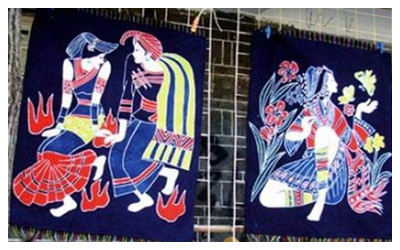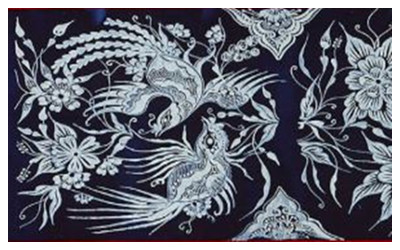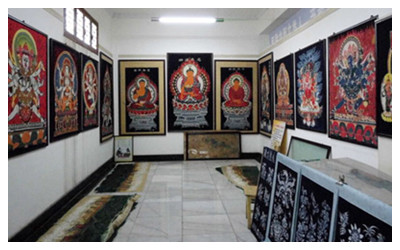Skype: neodalle-travel
Tel: +86 135 7447 2266
E-mail: sales@visitaroundchina.com

 |
 |
 |
| Tujia Batik | Fenghuang Miao Batik | Anshun Buyei Batik |
Batik invention is on the basis of people’s understanding and duplicate use of material properties, and the need to have a certain technical conditions and environmental factors. So it is produced and developed under certain material conditions and cultural backgrounds. Batik is based on people's clothing beautification needs in human civilization and progress to a certain extent. It is based on a variety of dyeing processes carried out. The time batik matured therefore should be produced after the maturation of spinning, printing and drawing. From raw material point of view, there are no special fabric requirements for batik, cotton, linen, silk, wool fabric can be adopted. Resist materials are also not confined in a particular species, animal and plant wax can be used. Usually, batik will choose resin and beeswax.
Before wax printing, Miao women need to bleach and wash the cloth produced by themselves by pulverin. Then pinch boiled taro into paste and paint it on the back of the cloth. Dry the cloth in the sun and then use an ox horn to rub down and polish the cloth. A slab stone is a natural mill ironing station.
Put the white cloth on the board or on the desktop and put the beeswax on the ceramic bowl or metal pot. Use a brazier of charcoal gray or bran shell fire to melt the wax, you can use copper knife dipped in wax. The first step of painting is to run location. Some areas are determined large contours according to the pattern paper cut, and then draw the various design patterns. After drawing the broad outlines, it can be handy to draw a variety of beautiful patterns.
Dip method is to put a painted wax on indigo dye vat. Generally every cloth needs to soak for five or six days. After soaking and drying out for the first time, you will get a light blue cloth. Then soak it a few times, it would show dark blue. If the depth of the two-color pattern needs to appear on the same fabric, then after the first soaking, and then point wax to paint flowers at the light blue. Then the dyed pattern would emerge in two shades. When the wax-scale dip into the vat, some "wax seal" split folding because of damage, so they produce a natural crack, generally known as "ice profiling." This "ice profiling" batik patterns tend to make more rich layers which has a natural and unique flavor.
After washing with water and then boil to diminish the wax, after rinsing, the fabric will show a blue and white pattern.
First, as the raw material is cotton batik cloth, its maintenance should pay attention to moisture, corrosion, avoid mildew. If you buy it for a collection rather than decorative, periodically dry it in the sun.
Second, batik can always use water to clean, but do not use detergent to avoid fade during the process of washing; not available machine washable. After washing, batik products can be ironed.
Third, the batik products can be framed as needed. As it is made with 100% cotton cloth, so it is an excellent choice for clothing, quilt and bed sheets. If used properly, it will make your home or office presents another round of fun.
Fourth, the batik in the collection and maintenance process should be placed in a clean and neat, environment, and shall be cleaned regularly.
 Ask Questions ?
Ask Questions ?